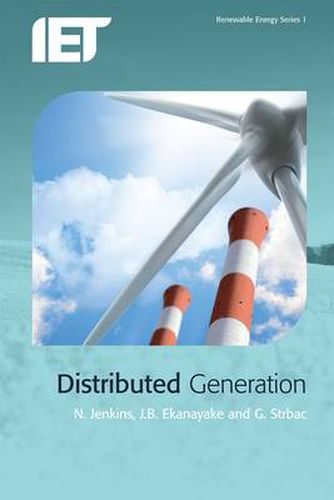Readings Newsletter
Become a Readings Member to make your shopping experience even easier.
Sign in or sign up for free!
You’re not far away from qualifying for FREE standard shipping within Australia
You’ve qualified for FREE standard shipping within Australia
The cart is loading…






Throughout the world there is concern over the impact of energy use on the environment (particularly CO2 emissions) and also over the security of fossil fuel supplies. Consequently, governments and energy planners are actively encouraging alternative and cleaner forms of energy production such as renewables (e.g. wind, solar, biomass) and combined heat and power (CHP).
The economics and locations of sustainable energy sources have meant that many of these new generators are connected into distribution networks. It is recognized that the information flow and control of distribution networks is inadequate for these future low-carbon electricity supply systems. The future distribution network will change its operation from passive to active, and the distributed generators will be controlled to support the operation of the power system. In many countries this transformation of electricity supply is managed through energy markets and privately owned, regulated transmission and distribution systems.
This book discusses the connection of generation to distribution networks and then moves on to consider how sustainable generation can be fully integrated into the operation of the power system. Both technical and economic aspects are addressed. It is written for later-year undergraduate and postgraduate students studying courses on energy. The book has four tutorial chapters (with examples and questions) to provide fundamental material for those without a strong electrical engineering background.
$9.00 standard shipping within Australia
FREE standard shipping within Australia for orders over $100.00
Express & International shipping calculated at checkout
Throughout the world there is concern over the impact of energy use on the environment (particularly CO2 emissions) and also over the security of fossil fuel supplies. Consequently, governments and energy planners are actively encouraging alternative and cleaner forms of energy production such as renewables (e.g. wind, solar, biomass) and combined heat and power (CHP).
The economics and locations of sustainable energy sources have meant that many of these new generators are connected into distribution networks. It is recognized that the information flow and control of distribution networks is inadequate for these future low-carbon electricity supply systems. The future distribution network will change its operation from passive to active, and the distributed generators will be controlled to support the operation of the power system. In many countries this transformation of electricity supply is managed through energy markets and privately owned, regulated transmission and distribution systems.
This book discusses the connection of generation to distribution networks and then moves on to consider how sustainable generation can be fully integrated into the operation of the power system. Both technical and economic aspects are addressed. It is written for later-year undergraduate and postgraduate students studying courses on energy. The book has four tutorial chapters (with examples and questions) to provide fundamental material for those without a strong electrical engineering background.